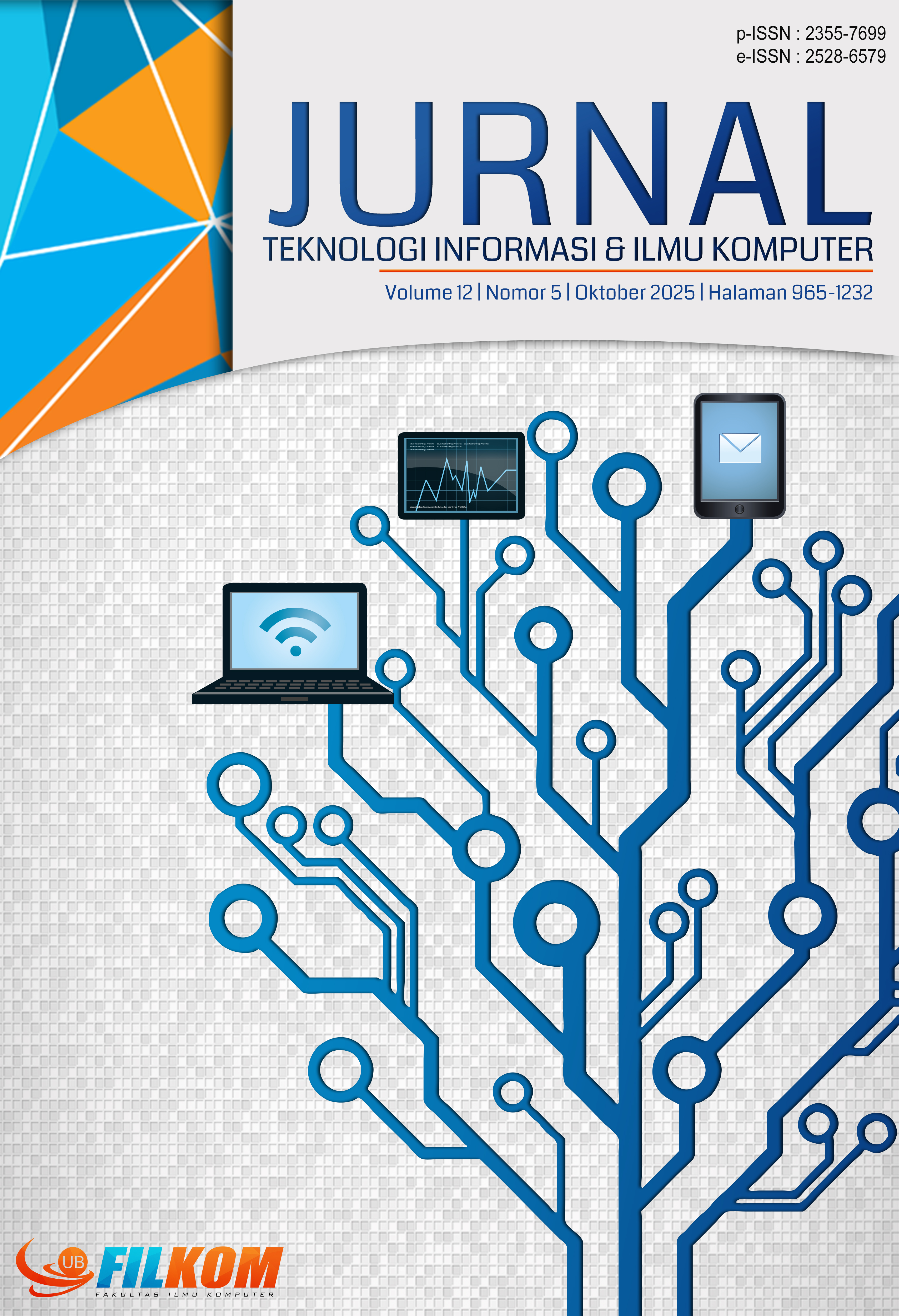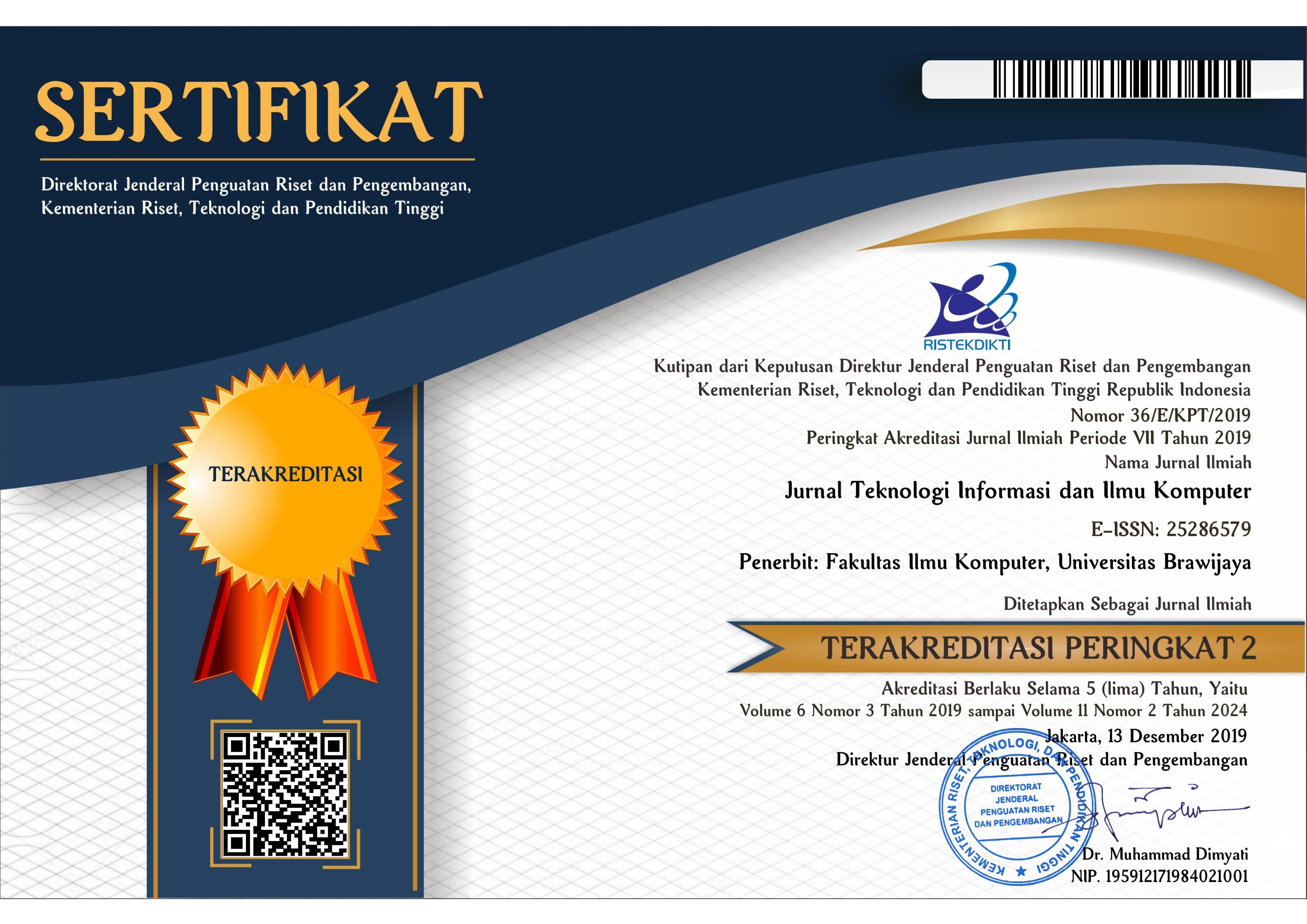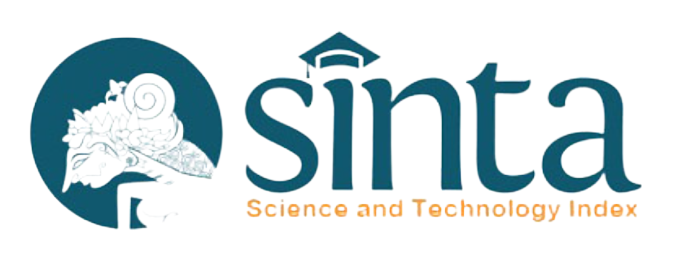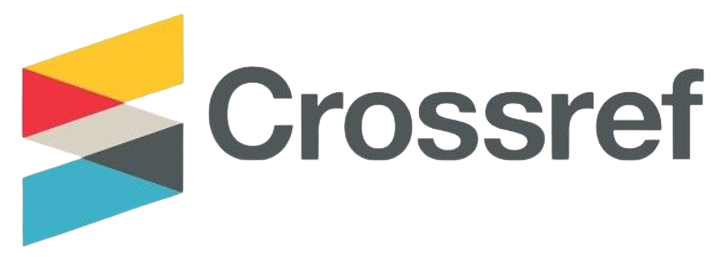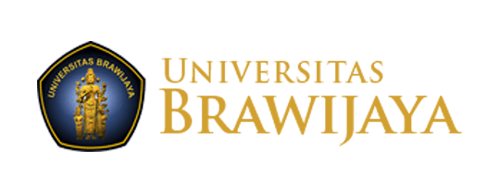Perbandingan Varian Model EFFICIENTNETV2 pada Citra Histologi Osteosarcoma
DOI:
https://doi.org/10.25126/jtiik.2025125Kata Kunci:
Akurasi, Diagnosis awal, EfficientNetV2, histologi tulang, Osteosarcoma, klasifikasiAbstrak
Osteosarcoma merupakan jenis kanker tulang ganas yang menyerang ujung tulang panjang dan berpotensi menyebar ke organ lain (metastasis). Diagnosis dini berperan penting untuk mendukung hasil pengobatan yang optimal. Penelitian ini menggunakan Convolutional Neural Network (CNN) untuk menganalisis dan mengklasifikasikan citra histologi tulang Osteosarcoma, dengan membandingkan kinerja tiga varian model EfficientNetV2 (S, M, dan L). Dataset yang digunakan adalah citra histologi Osteosarcoma yang telah didigitalisasi dan dataset ini diproses melalui tahap preprocessing, augmentasi, serta training menggunakan ketiga model, lalu diproses pula melalui konfigurasi hyperparameter. Evaluasi kinerja model dilakukan berdasarkan akurasi, Presisi, Recall, dan F1-Score. Hasil penelitian menunjukkan bahwa EfficientNetV2-S mencapai akurasi tertinggi sebesar 88,86% dengan efisiensi yang lebih baik, sedangkan EfficientNetV2-Memiliki stabilitas klasifikasi yang lebih baik dengan F1-Score yang lebih konsisten dengan akurasi sebesar 88,80%. Sementara itu, EfficientNetV2-L menunjukkan hasil akurasi yang kompetitif tetapi memerlukan sumber daya komputasi yang lebih besar. Analisis lebih lanjut menunjukkan bahwa pemilihan model tidak hanya bergantung pada akurasi, tetapi juga mempertimbangkan ukuran model dan kebutuhan komputasi. Hasil penelitian ini menunjukkan bahwa EfficientNetV2-S merupakan pilihan optimal berdasarkan akurasi dan efisiensi, sedangkan EfficientNetV2-M lebih unggul dalam stabilitas klasifikasi. Hasil penelitian ini dapat menjadi referensi dalam pengembangan sistem berbasis deep learning untuk diagnosis kanker tulang di masa depan.
Abstract
Osteosarcoma is a malignant bone cancer that primarily affects the ends of long bones and has a high potential for metastasis to other organs. Early diagnosis is crucial to improving treatment outcomes and patient prognosis. This study employs a Convolutional Neural Network (CNN) to analyze and classify histological images of Osteosarcoma by comparing the performance of three variants of the EfficientNetV2 model (S, M, and L). The dataset that used in this study is a digitized Osteosarcoma histology images, and will be processed through the preprocessing, data augmentation, and model training using the three different EfficientNetV2 variants. Additionally, hyperparameter tuning is performed to optimize model performance. The evaluation of model performance is conducted based on accuracy, precision, recall, and F1-score. The results showed that EfficientNetV2-S achieved the highest accuracy of 88.86% with better efficiency, while EfficientNetV2-S had better classification stability with a more consistent F1-Score with an accuracy of 88.80%. Meanwhile, EfficientNetV2-L showed competitive accuracy results but required more computational resources. Further analysis reveals that model selection not only depends on accuracy, but also considers model size and computational requirements. The results show that EfficientNetV2-S is the optimal choice based on accuracy and efficiency, while EfficientNetV2-M is the optimal choice in classification stability. The results of this study can serve as a reference in the development of deep learning-based systems for bone cancer diagnosis in the future.
Downloads
Referensi
ANHAR, A., & PUTRA, R. A. 2023. Perancangan dan Implementasi Self-Checkout System pada Toko Ritel menggunakan Convolutional Neural Network (CNN). ELKOMIKA: Jurnal Teknik Energi Elektrik, Teknik Telekomunikasi, & Teknik Elektronika, 11(2), 466. https://doi.org/10.26760/elkomika.v11i2.466
ANISUZZAMAN, D. M., BARZEKAR, H., TONG, L., LUO, J., & YU, Z. 2021. A deep learning study on osteosarcoma detection from histological images. Biomedical Signal Processing and Control, 69(July), 102931. https://doi.org/10.1016/j.bspc.2021.102931
ARUNACHALAM, H. B., MISHRA, R., DAESCU, O., CEDERBERG, K., RAKHEJA, D., SENGUPTA, A., LEONARD, D., HALLAC, R., & LEAVEY, P. 2019. Viable and necrotic tumor assessment from whole slide images of osteosarcoma using machine-learning and deep-learning models. PLoS ONE, 14(4), 1–19.
https://doi.org/10.1371/journal.pone.0210706
DLY, I. A., JASRIL, J., SANJAYA, S., HANDAYANI, L., & YANTO, F. 2023. Klasifikasi Citra Daging Sapi dan Babi Menggunakan CNN Alexnet dan Augmentasi Data. Journal of Information System Research (JOSH), 4(4), 1176–1185. https://doi.org/10.47065/josh.v4i4.3702
EZPERANZA, M., LETIK, F., & BISILISIN, F. Y. 2024. Klasifikasi Tanaman Herbal Berdasarkan Tekstur Daun Menggunakan Backpropagation Berbasis Citra. 01(06), 1–10. https://doi.org/https://doi.org/10.70404/ketik.v1i06.87
GAWADE, S., BHANSALI, A., PATIL, K., & SHAIKH, D. 2023. Application of the convolutional neural networks and supervised deep-learning methods for osteosarcoma bone cancer detection. Healthcare Analytics, 3(February), 100153. https://doi.org/10.1016/j.health.2023.100153
GUNAWAN, D., & SETIAWAN, H. 2022. Convolutional Neural Network dalam Citra Medis. KONSTELASI: Konvergensi Teknologi Dan Sistem Informasi, 2(2), 376–390. https://doi.org/10.24002/konstelasi.v2i2.5367
MAWARDI, D. P., Novita, M., & Dwi Saputro, N. 2024. Deteksi Awal Klasifikasi Jenis Penyakit Kanker Kulit Dengan Algoritma Convolutional Neural Network (CNN) Berbasis Mobile Apps. 3(2), 1–6. https://doi.org/https://doi.org/10.30872/atasi.v3i2.2305
Osteosarcoma-Tumor-Assessment | Osteosarcoma data from UT Southwestern/UT Dallas for Viable and Necrotic Tumor Assessment. (2019).
https://www.cancerimagingarchive.net/collection/osteosarcoma-tumor-assessment/
SUNIL, C. K., JAIDHAR, C. D., & PATIL, N. 2022. Cardamom Plant Disease Detection Approach Using EfficientNetV2. IEEE Access, 10, 789–804. https://doi.org/10.1109/ACCESS.2021.3138920
SUSANTO, L. A. 2023. Pemilihan Hyperparameter Pada Alexnet Cnn Untuk Klasifikasi Citra Penyakit Kedelai. Indexia, 5(02), 113. https://doi.org/10.30587/indexia.v5i02.5508
SYIFA, S. A., & DEWI, I. A. 2022. Arsitektur Resnet-152 dengan Perbandingan Optimizer Adam dan RMSProp untuk Mendeteksi Penyakit Paru-Paru. Journal MIND Journal | ISSN, 7(2), 139–150. https://doi.org/10.26760/mindjournal.v7i2.139-150
TAN, M., & LE, Q. V. 2021. EfficientNetV2: Smaller Models and Faster Training. Proceedings of Machine Learning Research, 139, 10096–10106.
VEZAKIS, I. A., LAMBROU, G. I., & MATSOPOULOS, G. K. 2023. Deep Learning Approaches to Osteosarcoma Diagnosis and Classification: A Comparative Methodological Approach. Cancers, 15(8), 1–15. https://doi.org/10.3390/cancers15082290
WIBOWO, T., & MAULANI, Y. 2024. Perbedaan Hasil Pewarnaan Hematoxylin-Eosin Preparat Limfonodi Pada Proses Clearing Menggunakan Xylol Dan Minyak Zaitun. 1(3), 197–201.
https://doi.org/https://doi.org/10.37985/plenaryhealth.v1i3.562
Unduhan
Diterbitkan
Terbitan
Bagian
Lisensi
Hak Cipta (c) 2025 Jurnal Teknologi Informasi dan Ilmu Komputer

Artikel ini berlisensiCreative Commons Attribution-ShareAlike 4.0 International License.

Artikel ini berlisensi Creative Common Attribution-ShareAlike 4.0 International (CC BY-SA 4.0)
Penulis yang menerbitkan di jurnal ini menyetujui ketentuan berikut:
- Penulis menyimpan hak cipta dan memberikan jurnal hak penerbitan pertama naskah secara simultan dengan lisensi di bawah Creative Common Attribution-ShareAlike 4.0 International (CC BY-SA 4.0) yang mengizinkan orang lain untuk berbagi pekerjaan dengan sebuah pernyataan kepenulisan pekerjaan dan penerbitan awal di jurnal ini.
- Penulis bisa memasukkan ke dalam penyusunan kontraktual tambahan terpisah untuk distribusi non ekslusif versi kaya terbitan jurnal (contoh: mempostingnya ke repositori institusional atau menerbitkannya dalam sebuah buku), dengan pengakuan penerbitan awalnya di jurnal ini.
- Penulis diizinkan dan didorong untuk mem-posting karya mereka online (contoh: di repositori institusional atau di website mereka) sebelum dan selama proses penyerahan, karena dapat mengarahkan ke pertukaran produktif, seperti halnya sitiran yang lebih awal dan lebih hebat dari karya yang diterbitkan. (Lihat Efek Akses Terbuka).

